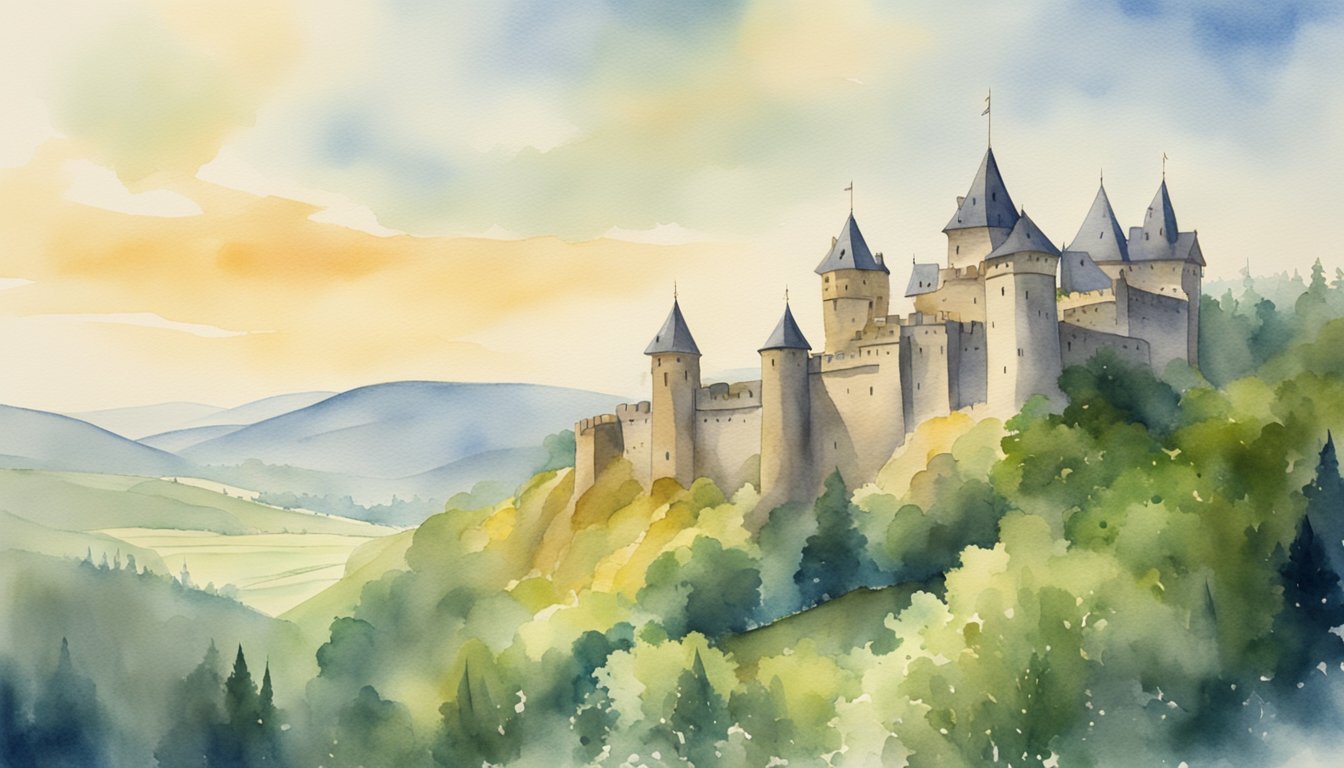History and Heritage of Glamis Castle
Glamis Castle, situated in the lush region of Angus, Scotland, near the villages of Forfar and Dundee, holds a significant place in Scottish history.
Dating back to possibly as early as the 11th century, the estate on which Glamis Castle stands has been linked to the Lyon family since the 14th century.
Sir John Lyon was granted the Thanage of Glamis by King Robert II in 1372, establishing a lineage that continues to this day.
The castle is famed for its stunning architecture, including a historical tower and intricate building designs attributed in part to the influenced remodelling by master mason Inigo Jones.
Despite its serene appearance, Glamis is steeped in tales of the supernatural, including the legendary ‘Monster of Glamis’ and a host of purported ghosts that wander its halls.
Further fortifying its place in cultural history, Glamis Castle is often associated with literature, believed to be the setting for Shakespeare’s tragedy, “Macbeth”.
Though no historical King Macbeth resided there, the connection has added to the castle’s mystique.
Glamis also bears a direct connection to British royalty, being the childhood home of Elizabeth the Queen Mother and the birthplace of her second daughter, Princess Margaret.
The Earls of Strathmore and Kinghorne have maintained the castle for over six centuries, and it remains a residence for the family.
Public access offers glimpses into the castle’s past, including Janet Douglas’s story, Lord Glamis’ wife, who was falsely accused of witchcraft and later burned at the stake in the 16th century.
The heritage of Glamis Castle is not merely in its physical presence but equally in its vibrant history, from royal connections to Shakespeare and the many legends that echo through its halls.
Visitors and historians alike continue to explore the layers of stories that contribute to its legacy.
Visiting Glamis Castle

Glamis Castle, set in the picturesque Scottish county of Angus, offers a unique blend of history, royal heritage, and beautiful landscapes.
As the childhood home of the Queen Mother, it invites visitors to explore its stunning gardens, partake in guided tours filled with rich stories, and attend various events.
Gardens and Grounds
Glamis Castle is enveloped by thriving gardens and expansive parkland, perfect for visitors keen to experience tranquility and natural beauty.
The walled gardens, reminiscent of centuries past, are meticulously cared for, providing an idyllic backdrop for a leisurely stroll.
Nature enthusiasts can embark on the nature trail to discover the castle’s diverse flora and fauna.
Tours and Activities
The Castle’s history is brought to life through a variety of guided tours, each led by knowledgeable guides.
Inside, visitors can admire historical artefacts, including paintings and family treasures, that chronicle the life of the royal family and the castle’s pivotal role in Scotland’s history.
Diverse tour options are available, catering to all interests and age groups.
Events and Accessibility
Glamis Castle hosts a range of events throughout the year, from seasonal festivities to educational workshops, enhancing the visitor experience.
The Castle is committed to accessibility, with efforts made to accommodate guests of all abilities.
Visitors are encouraged to check in advance for specific event details and accessibility arrangements.
Local Impact
The presence of Glamis Castle deeply influences the local village and the broader community, both culturally and economically.
It stands as a testament to Scotland’s heritage and supports local tourism, ensuring the vitality of the region.
The Castle’s initiatives often aim to involve and give back to the community, reinforcing its pivotal role in the local economy and its continued impact on Scottish tradition and tourism.




